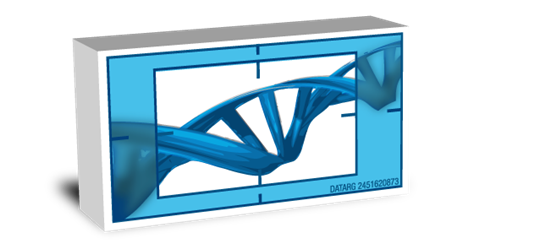At Dell, we are always fascinated by the power of people and computers coming together to create even more than they could have done on their own. Not only have we seen the incredible force of social media on our own business, but we have also seen some of our products, like laptops, workstations and servers, power some truly amazing innovation. For example, two of our services, Educational Technology and EMR Solutions, are key contributors to the spreading of two of the wonderful collaborations listed below.
1) Human Genome Project
- The Human Genome Project cost $3 billion.
- The project took 13 years to complete.
- The human genome contains over 20,000 genes and 3 billion base pairs.
The Human Genome Project was a massive undertaking. Without computers, the work of sorting out that information would take the dedicated effort of an entire civilization. In fact, because computers improved so much during the course of the research, the project was actually completed two years ahead of schedule.
2) Revolutionizing Revolution
- Facebook has 845 million active users.
- The average Facebook user has 130 friends.
- Twitter has 127 million active users.
- 54% of Twitter users use Twitter on their mobile devices.
- 36% of Twitter users tweet at least once a day.
Revolutions occur when the human desire for freedom is combined with a galvanizing idea to change society. Today, face-to-face contact and printed calls to action have been joined by social media as ways to spread ideas and organize like never before. This impact is even greater when combined with cellphones allowing protestors to coordinate more quickly and safely. From Occupy Wall Street to the Arab Spring, the digital world has shown that it can change the real world. And the explosion of human information with interconnected digital collaboration in the world is only increasing.
Source:
http://www.onlinemba.com/
3) Digitizing Books
- CAPTCHA is an acronym for: "Completely Automated Public Turing test to tell Computers and Humans Apart"
- Spammers have been known to pay approximately $1.00 (US) for each 1,000 solved CAPTCHAs to companies employing human solvers.
- Google set out to scan approximately 15 million books by 2014, but they passed the 12 million mark as early as June, 2010.
You may feel like CAPTCHA, the all-too-familiar blurry scramble of letters required to access many websites, is a waste of time. So did the inventors of CAPTCHA, who went on to create reCAPTCHA. The words for this system are pulled from a massive database of words from scanned library books – so now, the 200 million daily users of reCAPTCHA are helping to preserve and decipher a huge digital archive… the epitome of humans and computers coming together for greater good.
Sources:
Grossman, Lev (2008-06-05). "Computer Literacy Tests: Are You Human?". Time (magazine).
Bajaj, Vikas (April 25, 2010). "Spammers Pay Others to Answer Security Tests". The New York Times. Retrieved 2010-04-28
http://topics.nytimes.com/top/news/business/companies/google_inc/google_book_search/index.html
4) Education
- High school graduates can expect a $200,000 greater lifetime tax revenue
- In a study measuring the benefit of introducing technology in education:
- 45% of schools with some computers in the classroom have lower dropout rates.
- 58% of schools where every student had a computer had lower dropout rates.
- 81% of schools where teachers properly integrated computers in the learning process had lower dropout rates.
- 25% of would-be dropouts graduating from college equals $6.25 billion in tax revenue per year
Studies show that integrating computers into the classroom lowers dropout rates – and schools with higher laptops to kids ratios see an even better result. However, the biggest impact comes when educators and technology come together in the right way…through things like routine developmental assessments and teacher collaboration.
Source:
http://projectred.org/uploads/ISTE%202010%20Presentation%20v2.pdf
5) Electronic Medical Records (EMR)
- Switching fully to electronic records would save the U.S. medical industry $2 billion annually.
- An electronic medical record system can reduce deaths due to preventable errors in hospitals by up to 25 percent.
- Over 500,000 patients are injured by drug errors every year.
- Fewer than 10 percent of U.S. physicians have a fully functional electronic record system.
As medical records and communications move to a digital format, preventable errors will be reduced. Hospitals will be able to provide better care and doctors will have more time to spend on patients instead of paperwork.
Sources:
http://www.chitrec.org/news/cdc-issues-latest-emrehr-adoption-figures-among-office-based-physicians
http://www.medpagetoday.com/PracticeManagement/InformationTechnology/19928
6) Oil and Gas Meet Technology
- 75% of today's oil was discovered before 1980.
- 2/3s of oil produced in the next 20 years will be new discoveries.
Energy companies face growing demand and increasing costs. Computer technology helps them to predict the location of new oil and gas deposits. By speeding the process of exploration and reducing the number of exploratory wells needed, computer simulations reduce the costs and environmental footprints of energy exploration.
Source:
http://www.exxonmobil.com/Corporate/energy_outlook.aspx





